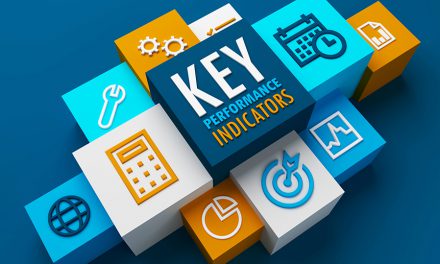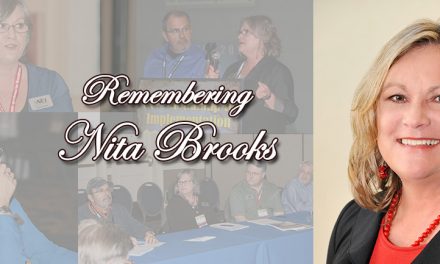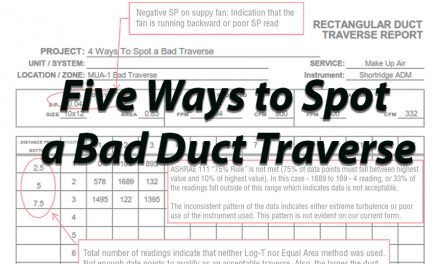This is the last article in a series by David Richardson discussing the PATH to Performance: Pressure, Airflow, Temperature, and Heat.
As you look down the Performance Path, it’s easy to get overwhelmed with the performance tests and diagnostics you can perform. Don’t make the mistake of trying to do everything at once. You will end up frustrated and anxious.
Wherever you are on the path, focus on small steps and consistent habits to give you the best chance of success.
Remember, this is a walk, not a 100-yard dash. Let’s look at the wisdom shared by other Performance-Based contractors who walk the PATH to Performance.
Start with the End in Mind

In Stephen Covey’s book, The Seven Habits of Highly Effective People (ncilink.com/7Habits), he refers to a habit called ‘Begin with the End in Mind.’ The first exercise Covey has his readers perform is to imagine themselves going to their funeral, three years from now. It instructs the reader to visualize the legacy they leave behind and the impact they had on others.
This powerful exercise has the reader consider where they want to be in three years so they can work their way back to achieve those goals today.
I want you to do the same thing with the Performance PATH. Start with what you want to accomplish one year from now using HVAC system performance testing, diagnostics, and repairs. Then, work your way back to the present-day and recognize what steps it will take to get there.
When my family-owned company started down the PATH back in 2000, we knew what we wanted to accomplish. We wanted to prove our installations worked better than our competitors and prove it through airside measurements like static pressure and delivered airflow.
However, once we began measuring, what we discovered took us on a minor detour. But the ‘end in mind’ didn’t change. Don’t let it surprise you when detours appear along your path.
Wisdom of the Crowd
If you have trouble defining what your ‘end in mind’ goal is, ask for feedback from your colleagues. Get their ideas and opinions. They may see opportunities you didn’t consider and help you find alternative ways to use system performance testing and diagnostics. Your chances of success are much higher when your team takes ownership of the idea.
This step is also a good time to figure out and decide who will walk the PATH first and lead the way. Choose wisely ‘ the most technical person you have might not be your best choice. Look for someone who sees the big picture and understands why the performance path is important.
It may surprise you who volunteers to lead the way if they see your vision and choose to take ownership of it. Most times you are the first key player. You must learn the skills and then teach those skills to other key players.
After that, they become the teachers and multiply the lessons you taught them.
Establish specific tests for each team member. Then determine how each ‘role’ will communicate or hand off results to others. See how comfortable each team member is performing different tests and assure they know what they should do. A good rule to follow is that all testing skills must be scalable and repeatable by anyone who performs a specific job. Your goal is to assure you don’t create a position only a select few can perform.
Avoid Perfectionism
Sometimes you won’t know where you want to go or what you want to do with these tests. You may even feel like your head is spinning when you consider the potential options and opportunities. It’s normal to feel unsure of what to do first and okay if you don’t have the perfect plan.
If you don’t know what your ‘end in mind’ is, then start with the first letter of PATH (Pressure) and begin testing. Start as small as you can think of and then gain momentum. If you don’t see the big picture, then focus on the small picture of learning a new skill and how to master that principle.
Often, the act of starting will prompt further ideas and additional considerations you wouldn’t have thought of until you started.
Take one step, then another, then another. If you have children, remember how you taught them to move from crawling to walking. Each child progresses differently, just as everyone will progress with testing at their own pace.
Some will grasp the principles on the first attempt ‘ others may need more encouragement and coaching. Recognize the different speeds and adjust expectations accordingly.
Focus on Progression

When you focus on a single step at a time, you tune out all the noise around you and stay focused on what you need to accomplish. Don’t work on more than two testing principles at a time. For best results, the tests should complement each other, such as total external static pressure (TESP) and plotting fan airflow.
As you continue to test, you get a feel for what works and what doesn’t. The testing process will vary slightly for each company, but the principles remain the same.
Refer to the static pressure article (ncilink.com/PATH2Boylan) of this series and the Lakeside Service example. You can see how John Boylan and his team use a process that handles static pressure. They have the steps down for how to test, diagnose, explain, hand-off, and sell with this single principle.
The goal is to achieve consistent progress forward, not going in circles. Mile markers help you determine your progress as you travel down a road.
Click below for the next page:













Recent Comments